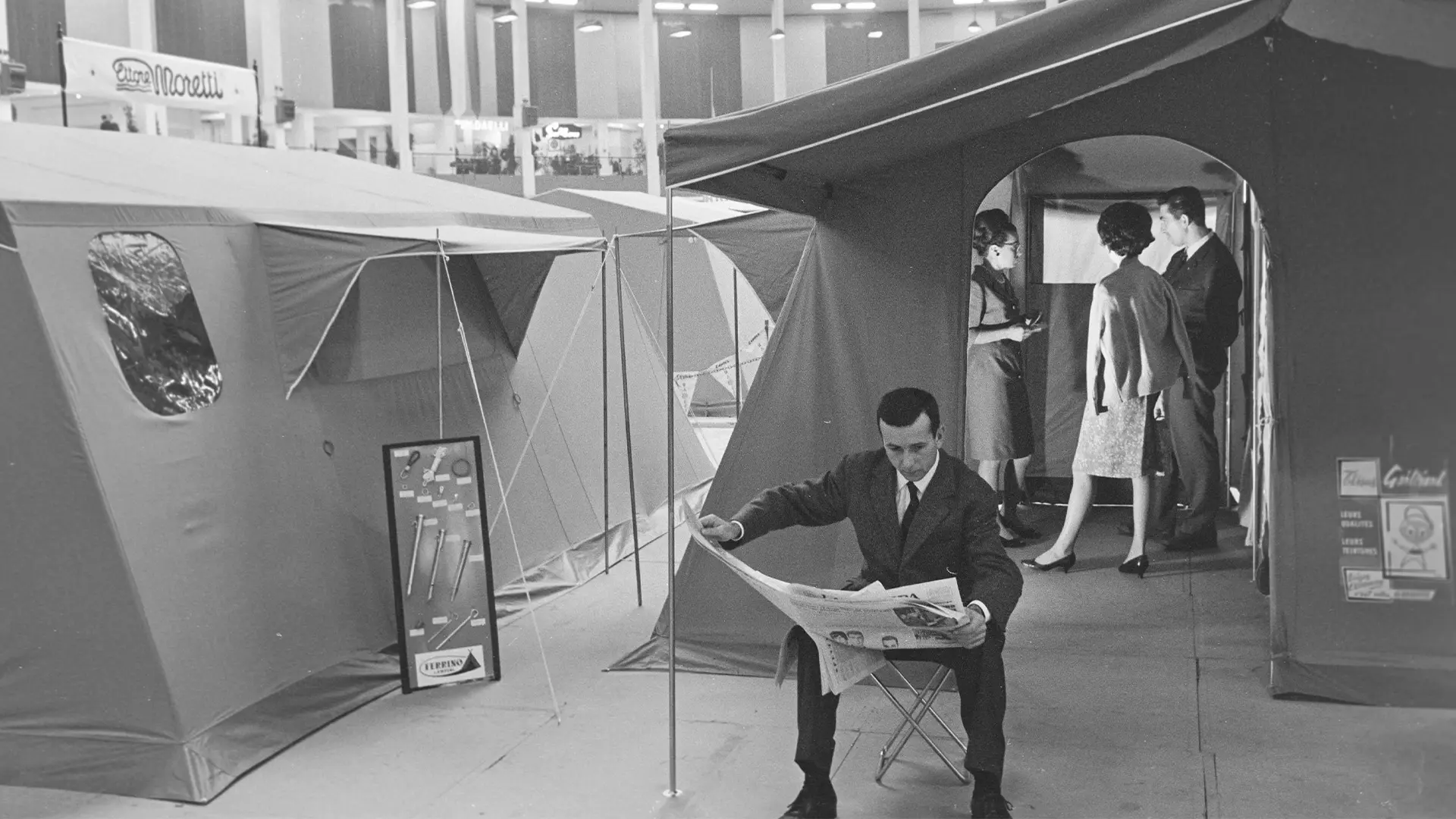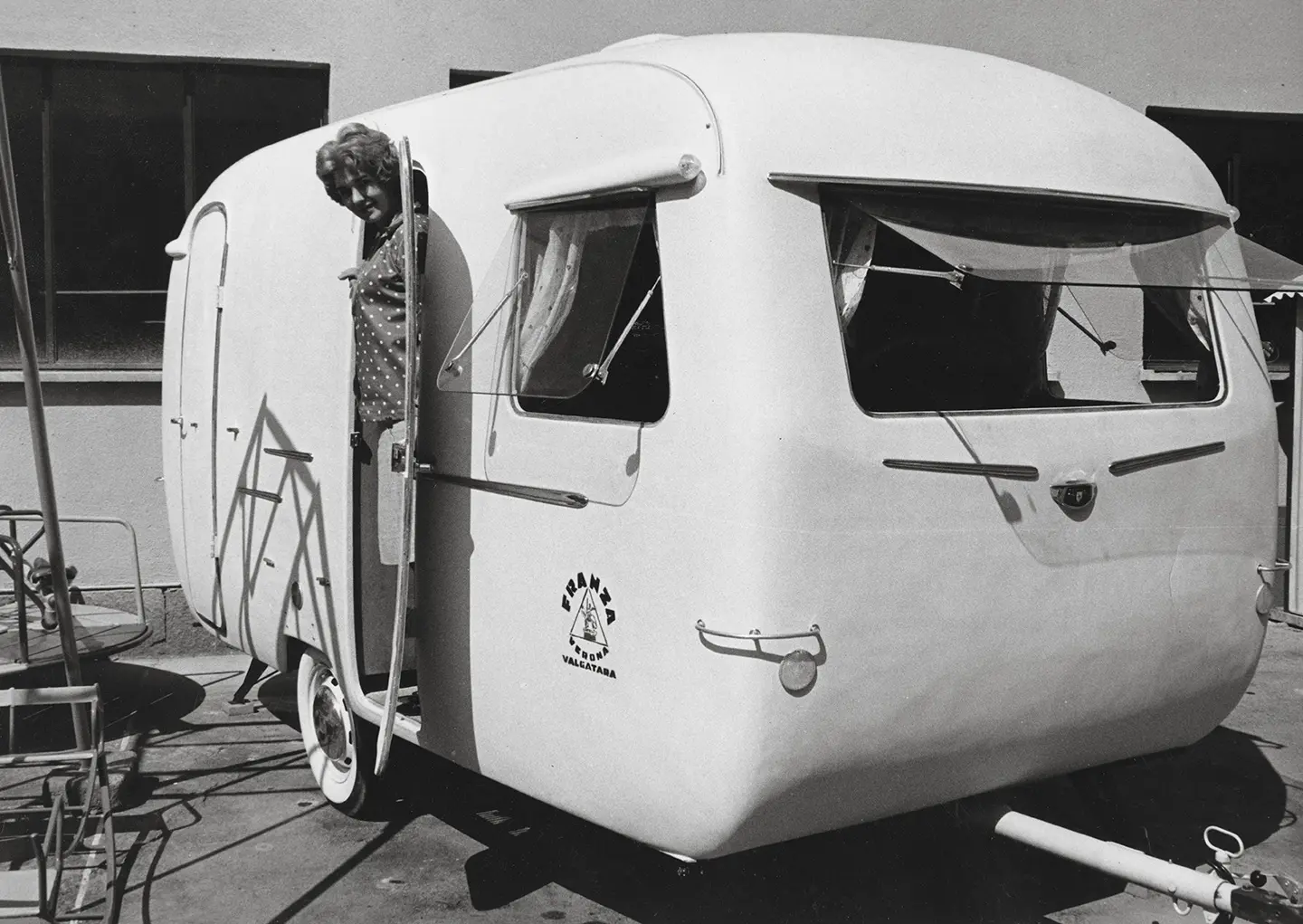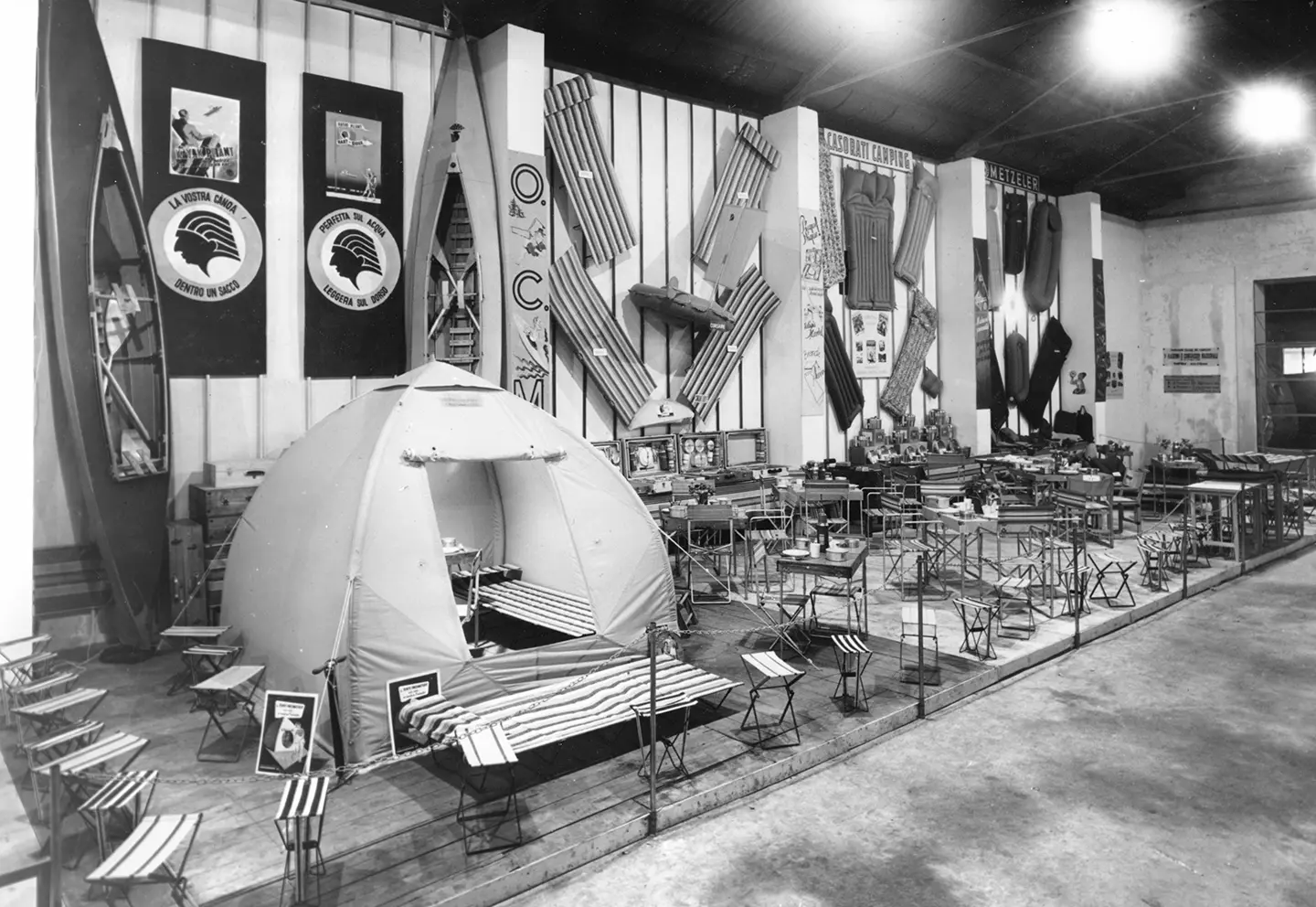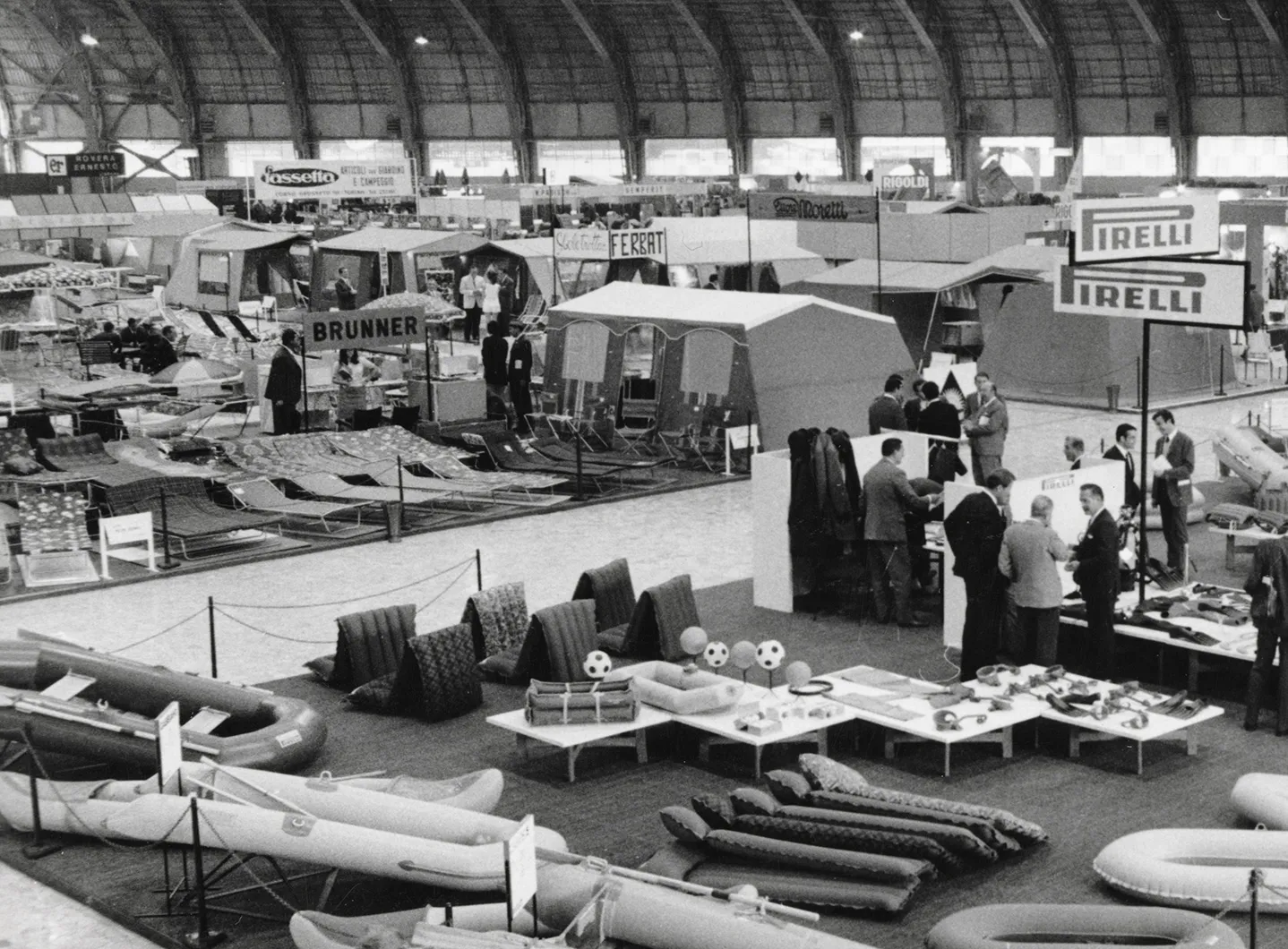In partnership with MiCodmc, a selection of establishments ripe for discovery during the 63rd edition of the Salone del Mobile.Milano, from 8th to 13th April
The history of camping in the pavilions of Fiera Milano

Camping tents at the Sincas International Camping and Sport Exhibition at the Milan Trade Fair in 1966
From the archives of Fondazione Fiera Milano, a dip into the new nomadic, inflatable and polymeric holidays of Italy in its boom years
Nowadays it is hard to keep our social networks – and ears – clear of words like glamping, and a certain never dormant imaginary of the wild, leading us perhaps to invest sizable sums in places that have only the inconveniences of the wilderness, while being in reality just as artificial as Piazza Gae Aulenti. Amid all this we are likely to overlook the moment when these things first became customary with us. We may fail to recall the occasions and channels by which this authentic collective ritual was first established.
Limiting we to the Italian scene, camping as a mass phenomenon is certainly not as old as the pyramids. Quite the contrary: it is a symbol of the post-war period and the boom years.

Exhibition of camping items and material at the Milan Trade Fair in 1961
A new Italy, a new and roaring economy, new lifestyles affordable by an increasingly broad public, with camping no longer exclusive to certain reckless hikers or noble fathers of mountaineering with three-barreled surnames. And in some degree also no longer holidays when people put up at fascinating (and exclusive) hotels. People started to go camping.
Beaches, groves, plateaus and lakelets became the promised land of tents, caravans, mats and rubber dinghies, folding deckchairs, removable fiberglass sheds, “ice cream sold at the counter” (perhaps in a shack built out of wooden lathes), “songs by the sea” (or the lakelet above would also do fine) and – why not? – with unlikely fiberglass swans for outings on shallow seas with a supposedly large dose of romance.

Exhibition of camping and outdoor sports at the Milan Trade Fair in 1952
This was the advent of a mobile, nomadic tourism, which favored wooden and metal wheels and platforms over the concrete foundations of houses and hotels, a new triumph of the temporary and the changeable, in its own way a consumer good.
In the absence of obsessive reels and bombastic feeds, it was the magazines that promoted this imagery and its objects. Then, confirming everything, came the moment of the real-life vision of these equipment for a new holiday lifestyle. And at this moment the scene was made up of the major national and international trade fairs, the great Fair in Milan or its specialist branches devoted to transport, all the way to a specific one such as Sincas, the International Exhibition of Camping and Sport that established the importance of the new ritual.
The driving force behind it all was new technological experiments into evolving typologies, like tents and caravans (at which figures such as even Marcello Nizzoli, designer of the Olivetti Lettera 22, tried their hands) and above all new materials. The scene was dominated by actors like Pirelli, who after colonizing all the living rooms in Italy – think of foam rubber, the nastrocord in Marco Zanuso’s Lady armchairs – and the bedrooms – think of Munari and his monkeys for Pigomma – promptly also dotted the now famous lakelet with rubber dinghies and above all mattresses, new inflatable icons well in advance of the radical follies of groups such as Superstudio or Coop Himmelblau.

Sincas International Exhibition of Camping and Sports at the Milan Fair in 1962
By removing whole tracts of the tourist market from overbuilding and – we like to imagine – a few meters of the Romagna Riviera and Mediterranean coasts from villas, the explosion of camping in Italy, decades later, almost looks like a first, embryonic and largely imperfect form of sustainable tourism.
Of course, in a first unwary moment it flooded the peninsula with garbage, and with those same new materials that were not exactly poster boys of recycling. But it helped tweak the situation, offering the first glimmer of an alternative to the established models, the possibility of a different relationship with the countryside, which we came closer to in the following years, with heightened awareness and even respect. Cohabitation, with due respect for glamping.


 Exhibitions
Exhibitions
















